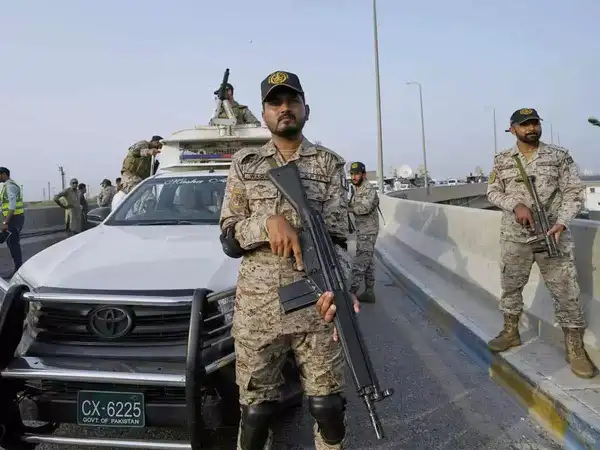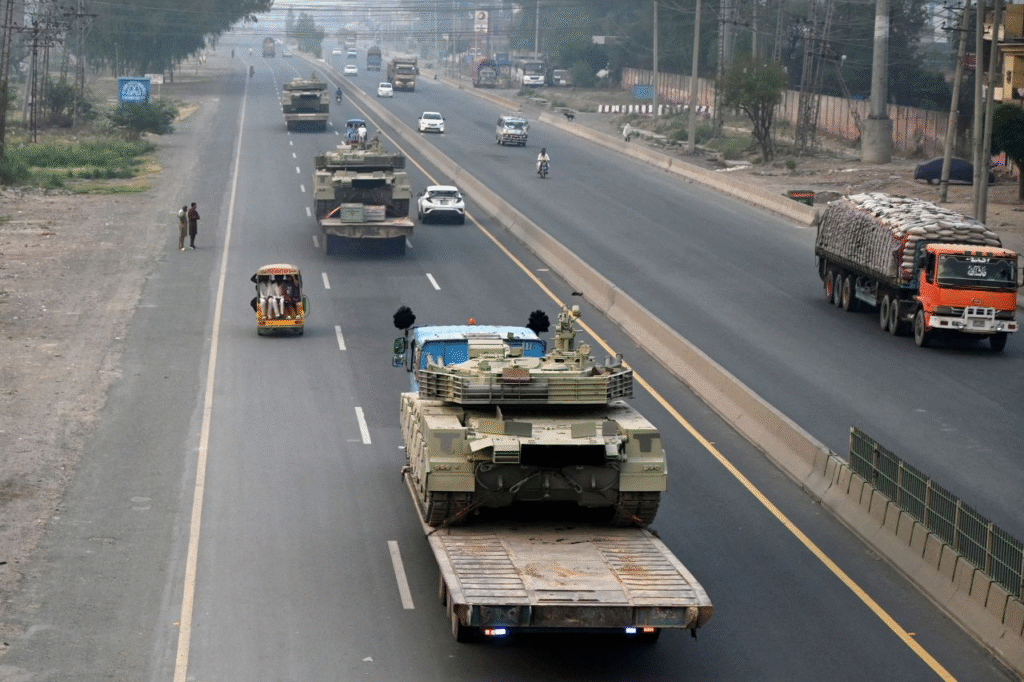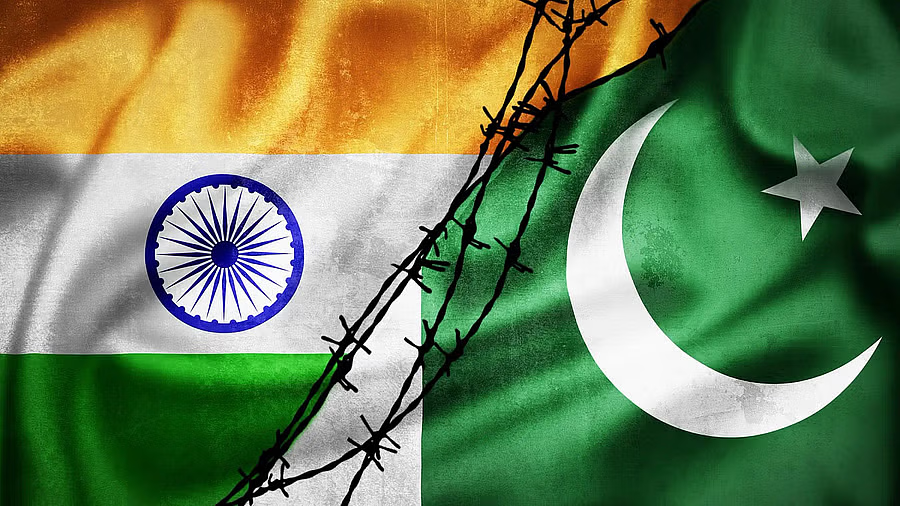
India’s unwavering resolve against terrorism took center stage recently when a meticulously planned operation eliminated five notorious terrorists in Pakistan. Dubbed “Operation Sindoor,” this airstrike demonstrated India’s commitment to safeguarding national security and combating cross-border terrorism. The operation has garnered international attention, showcasing the country’s strategic capabilities and determination.
The Genesis of Operation Sindoor
The genesis of Operation Sindoor can be traced back to a series of intelligence inputs indicating the presence of a major terrorist network operating from a safe haven in Pakistan. This network was responsible for orchestrating attacks on Indian soil, causing loss of life and instilling fear among citizens. For months, India’s intelligence agencies worked tirelessly to gather actionable intelligence, using a combination of human assets, satellite imagery, and electronic surveillance.
The targeted individuals were identified as high-value operatives of a proscribed terror group. These terrorists were allegedly involved in past attacks, including bombings and infiltration attempts. Their elimination became a priority for India to neutralize future threats and send a strong message to those supporting terrorism.
Planning the Air Strikes
Once the intelligence was corroborated, the Indian Air Force (IAF) was tasked with executing the mission. The operation required surgical precision to avoid collateral damage and ensure the elimination of the intended targets. The planning phase involved multiple stakeholders, including the Ministry of Defence, the National Security Council, and the Intelligence Bureau.
The mission’s complexity necessitated advanced planning and coordination. State-of-the-art aircraft equipped with precision-guided munitions were deployed. The IAF conducted extensive simulations and rehearsals to minimize risks and maximize the operation’s success rate. The pilots, ground crew, and intelligence teams worked in unison, ensuring every aspect of the mission was meticulously planned.
Execution: A Seamless Strike
In the early hours of the designated day, the operation was set in motion. Fighter jets took off from a strategic airbase, navigating through challenging terrains and evading enemy radar detection. The strike targeted a well-fortified compound in Pakistan’s Balakot region, known to house the terrorist network.
The precision strikes were conducted with such accuracy that all five terrorists were eliminated without any collateral damage. The mission’s success was attributed to the use of cutting-edge technology and the unparalleled skill of the pilots involved. As the jets returned to base, India’s defense establishment hailed the operation as a milestone in the fight against terrorism.
Global Reactions
The international community took note of India’s decisive action. While some nations lauded the operation as a legitimate act of self-defense, others called for restraint and dialogue. Countries like the United States and France extended their support to India’s fight against terrorism, emphasizing the need for global cooperation.
Pakistan’s response, as expected, was one of denial and deflection. The country’s leadership dismissed the operation’s success, claiming it was a fabricated narrative by India. However, independent reports and satellite imagery confirmed the destruction of the targeted compound, validating India’s claims.
Impact on Indo-Pak Relations
Operation Sindoor has further strained the already volatile relationship between India and Pakistan. The two nations have long been at loggerheads over issues such as terrorism, Kashmir, and cross-border infiltration. This operation underscores India’s zero-tolerance policy towards terrorism and its readiness to take bold actions to protect its sovereignty.
The strike also highlighted Pakistan’s continued role as a safe haven for terrorist groups. Despite international pressure, the country has failed to dismantle these networks, leading to repeated escalations with India. Operation Sindoor serves as a stark reminder of the consequences of harboring terrorism.
Strategic and Tactical Insights
The success of Operation Sindoor offers several strategic and tactical insights. First, it underscores the importance of actionable intelligence in modern warfare. The integration of technology and human intelligence played a pivotal role in identifying the targets and planning the mission.
Second, the operation showcased India’s growing military capabilities. The use of precision-guided munitions and advanced aircraft demonstrated the country’s preparedness to handle high-stakes scenarios. It also served as a deterrent, sending a clear message to adversaries about India’s ability to strike deep into enemy territory.
Finally, the operation highlighted the need for international collaboration in combating terrorism. While India’s unilateral action was successful, global support is crucial in addressing the root causes of terrorism and ensuring long-term stability in the region.
A Nation United
The news of the successful operation was met with widespread acclaim across India. Citizens hailed the armed forces for their bravery and dedication, with social media platforms flooded with messages of gratitude and pride. Political leaders across party lines came together to applaud the operation, reflecting a rare moment of unity in the nation’s political landscape.
The operation also reignited discussions about the sacrifices made by the armed forces and the need to support them in their endeavors. Public sentiment echoed the importance of standing firm against terrorism and supporting measures that ensure national security.
Challenges and the Road Ahead
While Operation Sindoor was a resounding success, it also highlighted the challenges India faces in its fight against terrorism. The porous borders, coupled with Pakistan’s continued support for terror groups, pose a significant threat to national security. Strengthening border infrastructure, enhancing surveillance capabilities, and fostering international partnerships are critical to addressing these challenges.
Additionally, India must continue to invest in its defense capabilities, focusing on modernizing its armed forces and adopting cutting-edge technologies. The success of operations like Sindoor hinges on the ability to stay ahead of adversaries in terms of strategy and technology.
Conclusion: A Defining Moment in India’s Fight Against Terrorism
Operation Sindoor stands as a testament to India’s resolve and capability to tackle terrorism head-on. The elimination of five high-value targets not only neutralized an imminent threat but also sent a strong message to those who dare to challenge India’s sovereignty.
As the nation celebrates this victory, it also serves as a reminder of the ongoing battle against terrorism. India’s commitment to protecting its citizens and upholding its values remains unwavering, and Operation Sindoor will be remembered as a defining moment in this journey. The world, too, must take note and unite against the common enemy of terrorism, ensuring a safer and more secure future for all.
Amplifying the Narrative
India’s air strikes under Operation Sindoor are not just a story of military triumph but a narrative of resilience and strategic foresight. The operation’s precision, from intelligence gathering to execution, has sparked discussions in defense circles globally. Experts have praised the seamless integration of technology and strategy, with many calling it a textbook example of modern warfare.
The aftermath of Operation Sindoor also opened a broader dialogue about regional security dynamics. India’s robust response served as a stark reminder to nations harboring terror elements that their actions will have consequences. This narrative is crucial in shaping global policies and pushing for accountability from countries that turn a blind eye to terrorism.
Broader Implications on Counterterrorism
Operation Sindoor has underscored the evolving nature of counterterrorism efforts. Traditional methods of combating terrorism, such as diplomatic pressure and economic sanctions, often yield limited results. By adopting a proactive approach, India has demonstrated the efficacy of direct action against threats. This paradigm shift is likely to influence counterterrorism strategies worldwide.

Furthermore, the operation has reignited debates on international laws governing sovereignty and self-defense. India’s action falls under the doctrine of anticipatory self-defense, a principle recognized in international law. The operation sets a precedent for nations facing similar threats, potentially reshaping the discourse on the legality of preemptive strikes.
Strengthening Internal Resilience
Beyond the military success, Operation Sindoor has also reinforced India’s internal resilience. The operation’s success was a result of years of investment in defense modernization and capacity building. India’s armed forces have consistently worked to upgrade their capabilities, ensuring they are prepared to tackle emerging threats.
The operation has also highlighted the importance of a cohesive national security framework. India’s ability to execute such a complex mission is a testament to the efficiency of its defense and intelligence apparatus. The seamless coordination between various agencies underscores the importance of inter-agency collaboration in achieving strategic goals.
Public Diplomacy and International Advocacy
Operation Sindoor has provided India with an opportunity to bolster its public diplomacy and advocate for stronger international action against terrorism. By sharing evidence of the operation’s success and the threat posed by the targeted terrorists, India has been able to garner support from the global community. This advocacy is crucial in building a united front against terrorism and pressuring nations that continue to support or harbor terror groups.
The operation also highlights the role of media and communication in shaping public opinion. India’s strategic communication post-operation has been instrumental in countering misinformation and presenting a clear narrative to the world. This approach has strengthened India’s position on the global stage and ensured widespread recognition of its efforts.
Building on the Momentum
As India moves forward, it is imperative to build on the momentum generated by Operation Sindoor. Strengthening partnerships with like-minded nations and fostering regional cooperation are essential in addressing the root causes of terrorism. India’s role as a global leader in counterterrorism efforts will depend on its ability to balance unilateral actions with multilateral diplomacy.
Additionally, the lessons learned from Operation Sindoor must be incorporated into future strategies. Continuous investment in intelligence, technology, and training will ensure that India remains prepared to tackle evolving threats. The success of this operation serves as a benchmark for future endeavors, inspiring confidence in India’s defense capabilities.
In conclusion, Operation Sindoor is not just a chapter in India’s fight against terrorism but a turning point in its approach to national security. The operation’s success has reinforced India’s resolve to protect its sovereignty and uphold its values, sending a strong message to adversaries and allies alike. As the nation continues its journey, Operation Sindoor will remain a symbol of India’s strength, resilience, and determination to secure a brighter future for its citizens.

